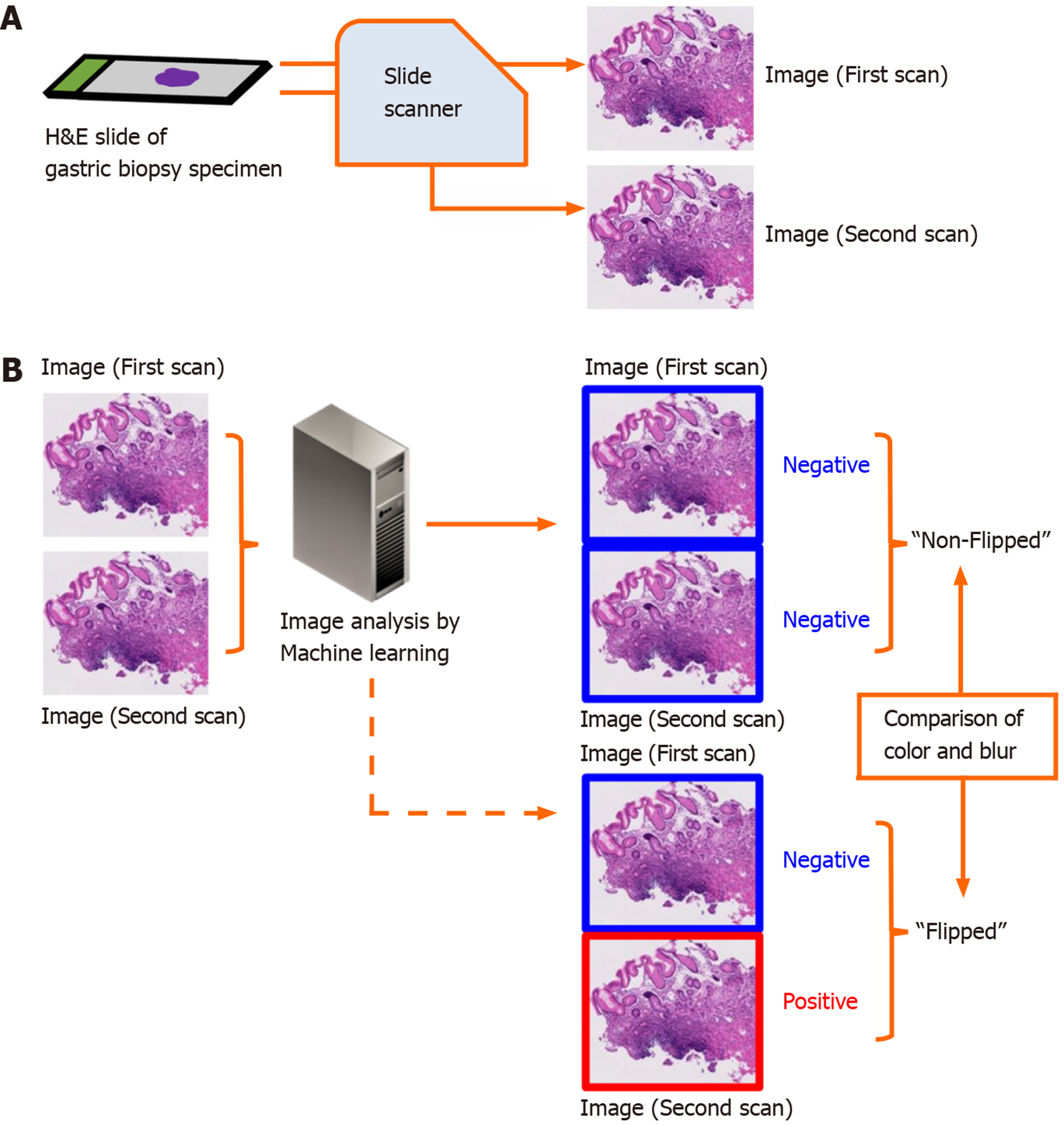Copyright
©The Author(s) 2020.
Artif Intell Cancer. Jun 28, 2020; 1(1): 31-38
Published online Jun 28, 2020. doi: 10.35713/aic.v1.i1.31
Published online Jun 28, 2020. doi: 10.35713/aic.v1.i1.31
Figure 1 The schema of this study.
A: Hematoxylin and eosin stained slides of gastric biopsy specimens were scanned twice by the same slide scanner, then the paired digital images were created; B: The paired images were independently analyzed and classified by our machine-learning model. If concordant classification results were obtained, the case is “Non-flipped”; if discordant classification results were obtained, the case is “Flipped.” Then, color and blur differences were compared between the “Non-flipped” and “Flipped” groups.
- Citation: Ogura M, Kiyuna T, Yoshida H. Impact of blurs on machine-learning aided digital pathology image analysis. Artif Intell Cancer 2020; 1(1): 31-38
- URL: https://www.wjgnet.com/2644-3228/full/v1/i1/31.htm
- DOI: https://dx.doi.org/10.35713/aic.v1.i1.31









